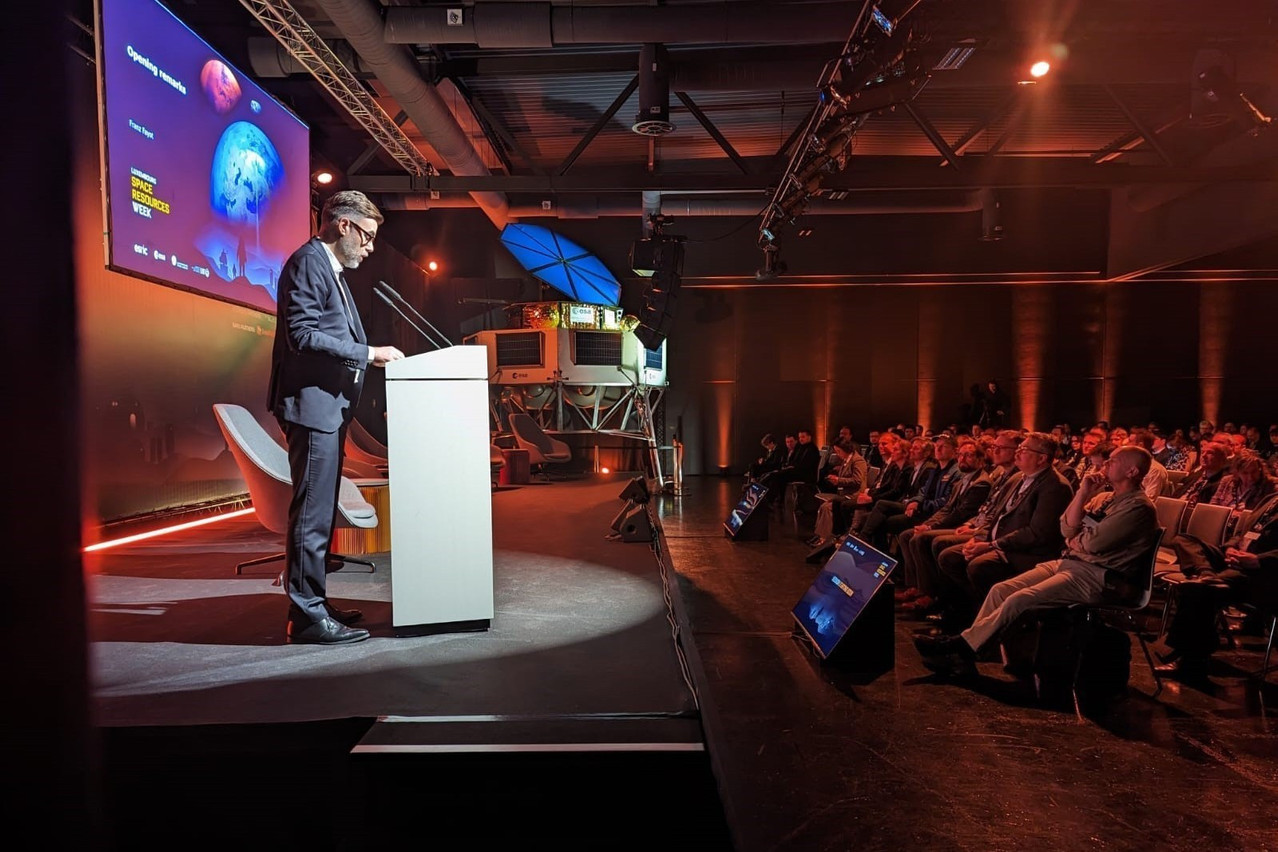Day three of the conference kicked off with a session about water on the moon: finding it, analysing it and using it to create things like power generators. Among other speakers, experts from the Luxembourg Institute of Science and Technology (List), Open University and the private sector discussed products in development that are contributing towards the goal of extracting and using lunar water.
“The mother of all holy grails of space exploration” is how moderator Maher Kalaji of the Asteroid Foundation described the topic at hand.
Analysing lunar water
Victoria Levy of the Open University introduced her project, a device that could be deployed anywhere that in-situ resource utilisation (ISRU) activities are taking place--anywhere where there might be water on the moon--and which could help to determine certain characteristics about it.
First off, lunar water? Maybe not rivers per se, but water molecules do exist on the moon, and present an important factor in facilitating future human activities there.
“We know that the majority of water on the lunar surface is at the poles in these cold traps--permanently shadowed or shaded regions--but we do think there is likely to be water maybe trapped within the regolith across the wider surface itself,” said Levy.
The device, which is operable but remains in a testing phase, should be able to help people see how much water is in a given place and what type of water it is. More specifically, it will carry out isotopic analysis and determine deuterium/hydrogen ratios.
Importantly, the device will be small, light, cheap and easily reproducible.
Levy added that part of the mission of understanding lunar volatiles, including water, is determining how sustainable they really are. “Is it something which is not going to be replenished? Is it something that we can rely upon to be a bit more sustainable? These are all questions that we still have to answer.”
The lunar poles could hold hundreds of billions of kilograms of water ice.
Finding lunar water
Jeff Plate, geologist and vice president of mining consultancy WGM, spoke about the challenge of mapping how lunar water travels and moves around--and thus where it ends up.
“Wherever you get water deposited--and especially where you’re on the unlit portions of the moon--over the course of the lunar day, you will get these sublimation and precipitation events that will occur over the course of time,” Plate explains. “And these particles will randomly jump in many directions throughout the lunar surface.”
By analysing factors like the shape of the terrain, some likely places for water can be determined. For instance, suggests Plate, you’re more likely to find it on crater walls rather than in the middle of the crater, a comparatively more accessible place for anybody seeking to harvest it.
Lunar energy plants
Mayuko Shinohara, research and development engineer at Chiyoda Corporation, points out the necessity of having locally made energy on the moon. Without it, space exploration and the development of a lunar settlement and society will be far more difficult.
“We believe that we can create an energy plant… by using water on the moon,” she said at the conference, adding that this wider mission has another benefit: such technology could contribute to life on earth too. A potential application might be to improve farming capabilities in harsh terrestrial environments.
Shinohara introduced a module that can be used to measure the concentration of water in a lunar regolith up to certain depths below the moon’s surface. Made up of a drill, a vaporiser and an analyser, the module is--a theme for space-related tech--as small and light as possible: 60x30x30cm and, currently, about 10 or 15kg.
She added that Chiyoda Corporation aims to be able to sell this module, as well as the data it collects--i.e., a water map of the moon--in as early as 2027.
